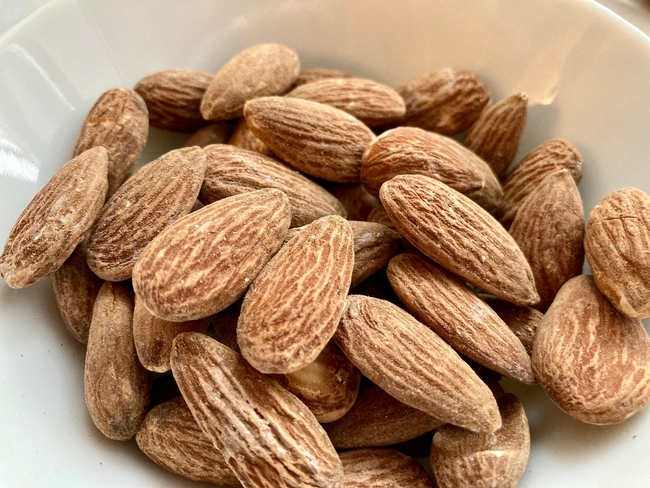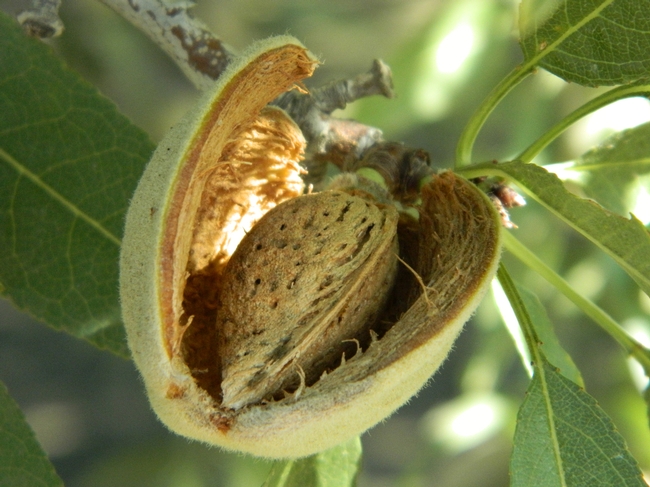
Posts Tagged: tree nuts
‘Containergeddon’ at ports cost California farmers $2.1 billion in exports
New research estimates economic losses due to congestion, inefficiencies
Between wildfires, drought, a trade war and the COVID-19 pandemic, the last few years have been hard on California farmers. But recent research by agricultural economists from UC Davis and the University of Connecticut suggests that economic losses to California agriculture from recent supply chain disruptions may have an even greater economic impact.
In an article titled “‘Containergeddon' and California Agriculture,” researchers estimate that there was a 17% decline in the value of containerized agricultural exports between May and September 2021, resulting from recent port congestion. This amounts to around $2.1 billion in lost foreign sales, which exceeds losses from the 2018 U.S.-China trade war.
By the peak of the disruption in September 2021, nearly 80% of all containers leaving California ports were empty – about 43% fewer filled containers leaving California's ports than there were prior to the pandemic. And since 40% of filled shipping containers leaving California's ports are filled with U.S. agricultural products – around a third of which are from California – farmers in the state experienced significant lost export opportunities.
By September 2021, there were around 25,000 fewer containers filled with agricultural products leaving California ports than there were in May 2021. Processed tomatoes, rice, wine and tree nuts saw the sharpest average trade declines.
“We calculated California tree nut producers lost about $520 million,” said Colin Carter, UC Davis Distinguished Professor of agricultural and resource economics. “This was followed by wine with a loss of more than $250 million and rice with about $120 million lost.”
During the pandemic, an increase in household savings led to increases in consumer spending, with many of these additional goods being imported from Asia. California ports were overwhelmed by the added shipping containers coming in from Asia. At times, bottlenecks at Southern California ports left more than 80 vessels waiting off the coast to unload. Docks and warehouses ran out of space and the turnaround time for shipping containers nearly doubled.
Increased U.S. demand for imported goods from Asia also led to increased demand for empty shipping containers in Asia. Prior to the pandemic, freight rates for shipping containers from Shanghai to Los Angeles were already higher than the return trip from Los Angeles, but this gap widened significantly after COVID-19. By September 2021, the fee to ship a 40-foot container from Shanghai to Los Angeles had increased sixfold to $12,000 – while the return trip from Los Angeles was only $1,400.
The high prices for containers from Asia, coupled with shipping delays from the high volume of imported goods entering California ports, made it more profitable for shippers to return containers to Asia empty, rather than waiting at the ports to have them loaded with U.S. exports for the return trip.
“If port inefficiencies persist, the ramifications for California agriculture will extend beyond the immediate loss of foreign sales, as importers begin to view California as an unreliable supplier of agricultural products,” Carter said.
To learn more about the supply chain disruptions at California ports, and their effect on California agriculture, read the full article by Colin Carter (Distinguished Professor in the Department of Agricultural and Resource Economics at UC Davis), Sandro Steinbach, and Xiting Zhuang (assistant professor and Ph.D. student, respectively, both in the Department of Agricultural and Resource Economics at the University of Connecticut): “‘Containergeddon' and California Agriculture,” ARE Update 25(2): 1–4. UC Giannini Foundation of Agricultural Economics, online at https://giannini.ucop.edu/filer/file/1640021835/20297/.
ARE Update is a bimonthly magazine published by the Giannini Foundation of Agricultural Economics to educate policymakers and agribusiness professionals about new research or analysis of important topics in agricultural and resource economics. Articles are written by Giannini Foundation members, including University of California faculty and Cooperative Extension specialists in agricultural and resource economics, and university graduate students. Learn more about the Giannini Foundation and its publications at https://giannini.ucop.edu/.
Enjoy your tree nuts: UC scientists help with regulatory compliance
California tree nut growers will soon have to comply with new agriculture water testing requirements under the Produce Safety Rule in the 2011 Food Safety Modernization Act (FSMA). University of California researchers and advisors are holding seminars to share information about the agricultural water requirements and proper water sampling methods in order to be in compliance with the regulations.
While irrigation or spray water is generally not the source of contamination, it is a vehicle for pathogens that are harmful to humans, especially on produce that is consumed raw; therefore, agricultural water was included as a part of the new regulation.
The UC Cooperative Extension office in Yolo County was the site of the first information sessions for nut tree growers/producers. It was an ideal location, as the fertile soils of the Sacramento and San Joaquin valleys are home to the largest tree nut production industries in the U.S. Some nuts are also grown in the coastal valley regions and Sierra foothills.
Good news for nut consumers
The new regulations and the focus on food safety practices, particularly within the nut tree industry, is of great interest because of the popularity of nutritious and delicious tree nuts. I for one am a big consumer. My day starts with almond butter on toast. That's followed by snacks of raw walnuts and dates. And there's always the handful of roasted pistachios to be grabbed for a salty treat.
It is lucky for someone who is nuts about nuts to live in California. The state is the nation's No. 1 walnut, almond and pistachio producer. California produces 80 percent of the world's almonds. We produce one million tons of almonds each year, followed by walnuts at nearly half a million tons, and pistachios at over a quarter million tons.
The California Department of Food and Agriculture reports the state's leading agricultural export products by value in 2015 were almonds ($5.14 billion), dairy products ($1.63 billion), walnuts ($1.49 billion), wine ($1.48 billion), and pistachios ($848 million).
Melissa L. Partyka, an ecologist at the UC Davis Western Institute for Food Safety and Security, (WIFSS) and Ronald F. Bond, a water quality researcher and field coordinator with WIFSS, are engaging local growers on issues of food safety and helping to educate them on not only the regulations but on ways to improve their water quality.
Partyka and Bond are staff in the UC Agriculture and Natural Resources' Vet Med Extension and Atwill Water and Foodborne Zoonotic Disease Laboratory, headed by UC Cooperative Extension specialist Rob Atwill, director of WIFSS.
They are affiliated with the Western Center for Food Safety, a Food and Drug Administration Center of Excellence, and are helping break down the regulations for the growers, regulations which can be a little overwhelming to the untrained.
Agricultural water, according to FSMA, is that water used to irrigate, treat, harvest, wash commodity or equipment on farm.
Growers are required to test water if it:
- Comes in contact with the harvestable portion of the commodity
- Is used to clean harvest equipment
- Is used to mix pesticides/fungicides applied to commodity
- Is used by harvest crews to wash hands
As of January 2016 growers will have 2 to 4 years (depending on farm size) to comply with most aspects of the Produce Safety Rule. Basically, the larger the production, the higher potential for risk to the consumer. How often a grower samples water depends on the water source. Well water requires an initial four samples, followed by one sample per year. Surface water, requires an initial 20 samples, followed by five samples per year. Water samples should be collected as close to harvest as is practical. During a long harvest season, samples can be spread out; in short harvest seasons, samples should be collected closer together; and in multiple harvest seasons, samples should be taken near each harvest if water is coming from the same source.
A full day workshop to be hosted by UC Cooperative Extension is planned for late June. Look for announcement of date, time, and location on the following websites: www.wcfs.ucdavis.edu, http://ucanr.edu, www.wifss.ucdavis.edu.




